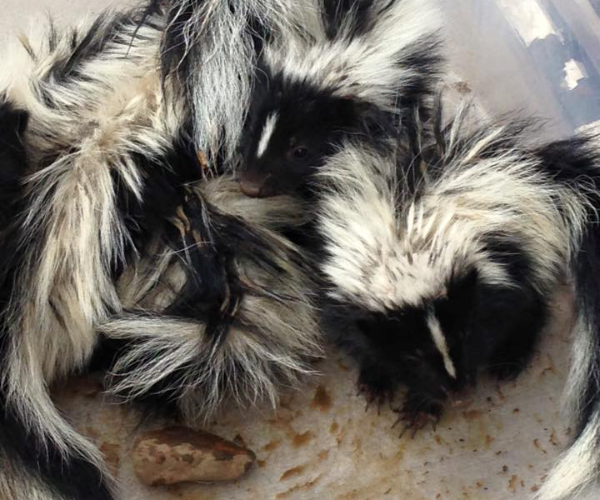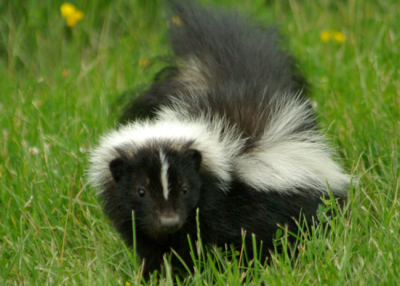Are Skunks Dangerous?

Skunks are mammals in the Mephitidae family, mostly identifiable by their black fur and single white stripe. They range in size from 6 -14 pounds and can grow up to 30 inches in length. A typical skunk is relatively comparable to the size of a small house cat. You may also know skunks for their infamous ability of spraying a foul, robust substance from underneath their tail glands to deter predators. Skunks are very common to spot and generally have a stigma surrounding their habits. Let’s take a deeper look into what these mammals are like and discern whether they can be a danger to you and your family or not.
Skunks are generally mild-mannered mammals that go about their own business, scavenging through open garbage and foods in various locations. They have a tendency to stroll through woods, neighborhoods, or anywhere they can find food and shelter. It is common for skunks to seek shelter in people’s basements, attics, and even in random dig outs that they create themselves. Skunks are normally harmless unless provoked. When frightened, these mephitidae mammals rely mainly on their foul liquid spray to deter predators. The liquid leaves an unpleasant smell and can make subjects extremely uncomfortable, especially when it comes in contact with eyes. Skunk odor has the ability to induce toxic shock syndrome in pets and cause nausea in humans. When a pet is infected, their healthy red blood cells are destroyed, and they normally will experience severe symptoms. The initial symptoms include weakness and pale gums in the subject, then later progresses to diarrhea, vomiting, seizures, and even anemia. Skunk shock syndrome is very rare, but most often occurs when the subject is in close proximity of the skunk and especially when trapped in a small confined space. It is important to keep your distance from skunks because their liquid spray can replicate the effect of tear gas when it comes in contact with the eyes.
As a last resort, skunks will default to scratching or biting if they are extremely frightened or alarmed. This only happens if the subject gets too close. It is important to note that skunks carry one of the most harmful diseases known to human beings- rabies. In fact, skunks are one of the most prominent carriers of rabies, only second to bats. Not only do skunks have the ability to spread rabies, but they are also known to carry other infectious diseases such as Baylisascaris Columnaris, a dangerous type of roundworm commonly found in feces and harmful to pets and children, Leptospirosis, Tularemia, Canine Hepatitis, Listeriosis, Q Fever, and Canine Distemper. The potential to carry and spread rabies and other infectious diseases is what makes skunks very dangerous when in close proximity.
Although potentially dangerous, it is important to note that skunks are typically not aggressive and generally do not seek to harm humans or pets. Skunks only pose a threat when stifled, alarmed, or provoked usually within close proximity.

